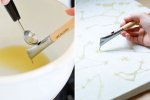Coming from this thread about my Morino.
In case I cannot find somebody who can do a complete overhaul on the inside (if necessary):
Since I want to learn this eventually, whats the worst I can do to it if I attempt re-valving and re-waxing myself? As far as I can tell the tunings pretty good, but if that would have to be changed I would be a little lost. But assuming I dont try to change the tuning, and assuming I dont physically break something, whats there that can go wrong? Would I be able to redo what I mess up? If its only my time Ill waste, thats okay.
Im not completely clumsy and Ive gutted my other accordion before (though thats not rocket science). I just dont have any tools or supplies so Id need to get a hold of that first.
In case I cannot find somebody who can do a complete overhaul on the inside (if necessary):
Since I want to learn this eventually, whats the worst I can do to it if I attempt re-valving and re-waxing myself? As far as I can tell the tunings pretty good, but if that would have to be changed I would be a little lost. But assuming I dont try to change the tuning, and assuming I dont physically break something, whats there that can go wrong? Would I be able to redo what I mess up? If its only my time Ill waste, thats okay.
Im not completely clumsy and Ive gutted my other accordion before (though thats not rocket science). I just dont have any tools or supplies so Id need to get a hold of that first.

